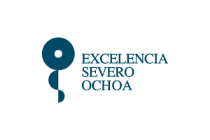 Past events: Juan Manuel Encinas, PhD. Adult hippocampal neurogenesis and reactive neural stem cells
Past events: Juan Manuel Encinas, PhD. Adult hippocampal neurogenesis and reactive neural stem cells
Juan Manuel Encinas, PhD. Adult hippocampal neurogenesis and reactive neural stem cells
When: 13:00 pm
In the adult hippocampus of most mammals, including humans, a mostly quiescent population of neural stem cells (NSCs) generates neuronal progenitors through asymmetric division. These progenitors will die or differentiate into neurons that will integrate into the hippocampal circuitry and play a role in spatial-related memory and learning, as well as in pattern separation, and responses to fear and stress. Adult hippocampal neural stem cells are also able to generate astrocytes in normal conditions, through activation-coupled astrocytes differentiation, a process which causes an age-associated progressive depletion of the NSC pool. Neuronal activity is a main regulator of NSC activation and new neuron maturation. We have recently discovered that that after epileptic seizures NSCs become reactive (RNSCs), as they get activated massively and transform into reactive astrocytes (RAs) abandoning their neurogenic potential. This seizure-induced impairment of neurogenesis might explain some of the cognitive deficits and comorbidities associated with mesial temporal lobe epilepsy (MTLE). MTLE specifically affects the hippocampus and related structures and is characterized by poor prognosis and being resistant to drug treatment. We have identified the lysophosphatidic acid receptor 1 (LPAR1) as a potential specific marker for RNSC-derived RAs in the epileptic hippocampus using the LPAR1-eGFP transgenic mice, suggesting differences between this cell type and parenchymal astrocytes-derived RAs. Finally, we have found that with aging, NSCs also acquire a reactive-like phenotype that associates with impaired functionality. Together, our results provide new insight into the plasticity and heterogeneity of hippocampal NSCs and highlight their potential as therapeutic targets in epilepsy and aging.









